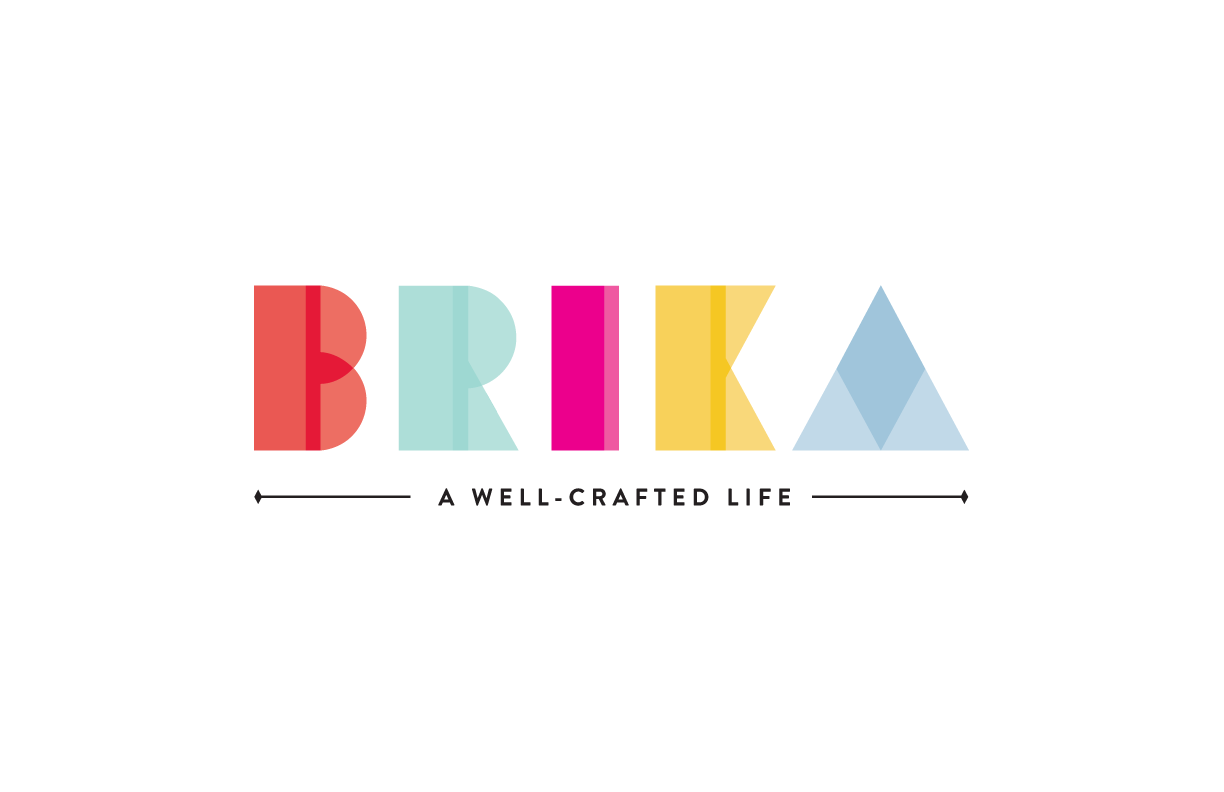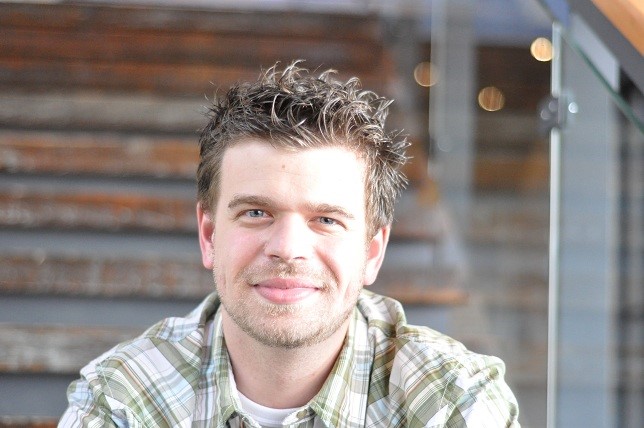Featured Interview - Jen Lee Koss, Co-Founder of BRIKA

By Rebecca Kacaba and Ian McLeod*
We interviewed Jen Lee Koss, co-founder of BRIKA, to learn how building a brand leads to success. BRIKA is a unique online shopping destination that offers a curated selection of pieces that are destined to become heirlooms, and that celebrates the makers behind them. The company's website was an Honoree at the 2015 Webby Awards.
BRIKA is growing offline too; it recently opened stores on Queen St. and in Yorkdale Mall in Toronto and has partnered with large retailers such as Hallmark and the Bay. In the fast-paced world of startups, BRIKA is an example of a company that is unafraid to think long-term.
How was BRIKA born?
About five years ago, I moved to Toronto from Boston and was working in private equity. Retail branding and consumer trends form a thread that has followed me throughout my career. I started reading Kena Paranjape's retail blog and felt a strong connection to the voice behind it. When I found out she also lived in Toronto I sent her an email to see if we could meet. We hit it off immediately.
At that point, neither of us was in a position to start a business, but all of our conversations had this unspoken subtext that we wanted to work together at some point.
Kena emailed me one day and just outright said, "I'm ready, let's start a brand together." I recently had my second child and a sudden career change represented a huge risk. But after some thought, I realized that there was never going to be a 'right' time and that I should jump in with both feet. I think one aspect of being a successful entrepreneur is to push yourself into saying yes to opportunities, even when they seem daunting.
Wow, that is such a wonderful way for business partners to meet. What were your initial steps?
We hit the ground running; we were executors first and foremost. We didn't do a lot of research on business plans, strategy and all those extras. Instead, we figured out the core of our business and what we felt most strongly about - we wanted to build a brand. Both of us felt strongly that there wasn't a brand that stood for excellence in artisan design and craft.
Lots of people suggested we should produce a minimum value product. Others thought we should just throw some product up online as a quick test. Instead, we met with a trusted branding partner and focused on determining our voice, the brand's message, and what we wanted to stand for.
It can be very hard to ignore these voices early on. I think it is important to be secure in what you are trying to build.
What are your thoughts on launching with a partner? What makes your partnership successful?
First off, I'm always blown away by the people who manage to start something on their own. I honestly don't know how they do it. The time and energy demands are so high when you're starting out a business. I think that having a trusted partner right from the get go is a huge advantage. That said, it isn't necessarily easy to find someone to launch with. Some people have success with entrepreneur matchmaking events where you can meet other entrepreneurs with different skill sets. Kena and I are very lucky to have met serendipitously.
Look for people who you like but are not like you. Kena and I are successful as partners because our different skill sets create a very natural division of labour. Our approach to business is also very complementary. I tend to leap at every opportunity with tons of energy while Kena is a bit more cautious and likes to take her time to fully consider a proposed idea. While it may seem easier to work with like-minded people, we've found our differing approaches to be a real asset.
How did you go about growing the brand?
Our approach has always been to work backwards from an idea. We figure out what we think the brand should stand for and then work backwards. Once we've figured out where or how we want to present the product, we test the idea.
For example, this was how we decided to partner with Hallmark. We want BRIKA to be a brand strongly associated with gifting. Gifting forms a large part of our sales and the idea was to capitalize on this. At least 1 in 3 purchases on the website is a gift. Working backwards, we realized that a partnership with Hallmark was the perfect fit for our product. BRIKA adds value to Hallmark by providing a curated selection of quality products to Hallmark stores across the United States. In addition, we can select artisans that are local to each Hallmark location. For this project, 20% of the merchandise was crafted by artisans local to each store. In turn, we gained access to a much wider distribution network and associated BRIKA with one of the most recognized and respected brands in the gifting industry.
In what ways has your and Kena's thinking evolved in the years since you launched?
I would say we've had two significant mental shifts since our early days. These changes have shaped our growth strategy.
First was a shift in our consumer understanding. A little while back I attended an event with Satish Kanwar, director of product at Shopify. He is one the most wonderfully intelligent people on the planet and gave us a great piece of advice - don't chase eyeballs, go to where the eyeballs are already looking. In the early days, we spent a lot of energy chasing eyeballs saying "Hey! Here we are, come check us out!" to minimal effect. Now we go to the places our customers are already looking. This shift is borne out by our decision to focus more on pop-up shops and open the store on Queen St. We know our customer is someone who enjoys shopping at boutiques and physically interacting with the product.
The other shift was recognizing the value generated from business to business transactions. There is a huge value-add for our artisans, our business partners and for us. You have immediate access to much wider distribution when working with large existing brands like the Bay and Hallmark. Our artisans may not be able to negotiate with these businesses on their own or handle the demand volume. By being part of a larger network under BRIKA, these immensely creative, skilled artisans can break through the noise and have their product shown to a much wider audience. Realizing the business-to-business side needed greater emphasis was huge. It has helped the brand scale up very quickly.
When did you sit down to do a shareholder's agreement?
Early days, very early days. Again, that decision came from an attitude at the outset that if we were going to launch this brand, we were going to do it properly. I think nowadays these tools are basically startup 101. You just have to get them done. It is great that some law firms, such as yourself, offer flat-rate packages. Early startups can budget these costs with certainty. Getting this stuff done early will save you money and headaches down the road.
How many rounds of funding have you done?
We don't think of funding in terms of discrete rounds. We will only raise money when we are absolutely certain we need it to grow. Our approach to funding flows from our broader approach to growth. We test ideas then use that as a proof point when we approach investors. This contrasts with some startups that are mainly focused on having the right growth metrics to achieve a large amount of funding per round. This strategy may apply to certain businesses, but we are more focused on building value in the long term.
We've always felt that limiting your funding is a good thing; it forces you to be more creative and scrappy. This is when the best ideas can happen. Managing limited finances in your budget is a huge skill that every entrepreneur should develop.
What are your experiences raising funding and working with investors?
First off, raising money is a total distraction from the business. It will consume virtually all the time of one very senior person within the company.
We are a bit more strategic in our approach to finding investors. We reach out to people who understand brands, consumers, and the retail environment. Our experience has been that talking with investors who already understand your industry leads to a much quicker 'yes.' These investors already understand our business and understand the slower growth model associated with building a brand. Of course our investors want to see a return (and so do we), but there is a world of difference in the type of conversation and the time horizons involved.
The startup sector is very male-dominated. What are your experiences with this and how do you see it changing?
I recall some press last year covering how women were poorly treated in the industry. Although my experiences have been positive, the gender ratio surprised me a bit. Coming from the world of private equity, which is quite imbalanced, I didn't expect the startup sector to be even more so.
One of our more bizarre experiences was talking to VCs in the early days. We would do our pitch and get the response, "I would love to show this to my wife/girlfriend/assistant." It is great to run an idea by the target consumer but the response came off as a bit dismissive. The majority of online, household and gifting purchases are driven by women, however the majority of startups in these areas are run by men. I think there is considerable room for innovative women to move into this space and find success.
Where do you see BRIKA in five years?
In five years we would like to say that we've built a brand that people love and are genuinely proud to associate themselves with. We would like to grow the business internationally. We want to be the brand that defines excellence in artisan goods and design.
Visit Brika's website to shop or check out local events.
The Aird & Berlis LLP Startup Team has a wealth of experience assisting startups with a range of activities including incorporation, shareholders agreements, protecting intellectual property and software agreements. For more information, please contact any member of our Startup Team.
*Ian McLeod was a summer student at Aird & Berlis LLP in 2015.



